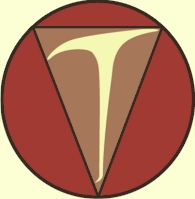|
|
|
Cabinet
Primer
There
are
basically
two main
types of
cabinets;
Face
frame
and
Euro;
A face
frame
cabinet
as it's
name
says,
has a
frame
around
the
outside
edges of
the
cabinet
box as
well as
any
number
of
horizontal
and
vertical
dividers
to break
up the
space
inside
of the
outer
frame.
Euro
cabinets
on the
other
hand
only
show the
thickness
of the
material
that the
box is
made of
(usually
3/4").
Euro
cabinets
open up
the
space of
the
cabinet
more
than
face
frame
cabinets
and
definitely
changes
the
style of
the
cabinetry.
The next
major
design
detail
is the
"set" of
the
doors
and
drawer
fronts:
" Flush
inset"
doors
and
drawers are
fitted
inside
of the
face
frame or
the box
in the
case of
a Euro
cabinet.
The door face
is
usually
in the
same
plane as
the face
frame or
the Euro
box's
front
edges.
"Full
overlay"
doors
and
drawers
completely
cover
the face
of the
cabinet
with
generally
1/8"
clearance
between
doors,
drawer
faces,
and trim
pieces.
"Overlay"
doors
are
set in
front of
the face
frame and
are usually
1/2"
larger
than the
opening
on each
edge but
can have
any
dimension
of
overlap.
"Half
inset"
or "Rabbeted"
doors
have the
corner
removed
all
around
the
inside
edge of
the
doors.
This
allows
part of
the door
to slightly
cover
the outside
of the
face
frame
and part
to
recess
slightly
inside
the
frame
making
the
doors
and
drawer
fronts
appear
to be
thinner
when
closed.
"Half
overlay"
doors
and
drawers
are for
Euro
cabinets
only.
They are
like a
full
overlay
except
that
they
only
cover
about
half of
the
exposed
edge of
the
box.
Other
overlay
designations
can be
specified
for
example,
a 1/4"
overlay
door
would
only
overlay
the box
1/4".
Some
other
types of
doors
are:
Pocket
doors
-
must be
flush
inset
and they
push
back
inside
the
cabinet
when
open to
hide the door(s).
Roll-up
doors
-
are
sectioned
horizontally
which
allows
them
be able
to pushed
up and
hidden
inside
the top
of the
cabinet
when
open (like a
roll top
desk).
Garage
doors -
hinge at
the top
and then
push
back
into the
cabinet.
These
must
also be
flush
inset
and are
not
sectioned.
Awning
doors
- hinge at
the top
and
usually
have a
stay or
support to
hold
them up
when
open.
How the
door is
set
doesn't
much
matter
on this
type.
Transom
or fold
down
doors
are
hinged
at the
bottom
and
usually
have a
device
to keep
them
from
opening
more
than 90
degrees.
Bi fold
doors
which
hinge an
one side
and in
the
middle
of the
door as
well and
"accordion"
to one
side
when
opened.
Hinges
are the
next
subject
to
tackle.
The most
common
these
days are
"Euro
hinges"
these
are a
hidden
hinge
and are
mounted
on the
inside
of the
cabinets.
Most
people
like
them for
several
reasons;
you
don't
see them,
they are
easily
adjusted
in three
directions,
and they
are
inexpensive
and easy
to
install.
There
are many
styles
of Euro
hinges
for
different
applications.
Some are
self-closing
and some
are free
swinging.
Some
open 110
degrees
and some
open
wider.
Some are
for
inset
doors
and some
for
overlay
etc.
The next
most
common
type of
hinges
are
"exposed"
or
surface-mount
hinges.
These
come in
an
almost
unlimited
amount
of
styles
and
finishes
from
ultra
modern
to old
mission
wrought
iron
types
in rusted
finish.
These
are a
bit
harder
to set
and
generally
do not
have any
adjustability.
There
are
"butt"
hinges
which
only
show the
barrel
of the
hinge
when
closed
which
are like
the
hinges
on your
front
door
but
smaller
generally.
Piano
hinges
are
continuous
hinges
that
usually
run the
entire
side (or
top or
bottom)
of the
door.
There
are a
lot of
specialty
hinges
e.g. for rabbeted
doors
and also
for some
of the
other doors
mentioned
above.
Drawer
glides
come in
several
different
styles
and
options.
The most
common
in use
today
are side
mounted
ball-bearing
type.
These
generally
have a
75 to
100
pound
load
rating
per
pair.
They
come in
3/4
extension,
full-extension
and
over-extension
if it is
necessary
to have
the
drawer
come out
further
than the
cabinet.
They
come in
a
variety
of
lengths
and are
available in
higher
load
ratings.
These
can be
mounted
hidden
under
the
drawers
but it
decreases
the load
rating
by about
half.
Blum
company
makes a
hidden
glide
they
call
"Transom
glides"
These
mount
under
the
drawer
box
without
loosing
any of
the load
capacity.
These
can be
fitted
with "Blumotion"
dampeners
which
close
the
drawer
very
slowly
for the
last few
inches
like
having a
shock
absorber.
Unfortunately
these
glides
are
significantly
more
expensive
to buy
and take
more
time to
install.
Other
companies
have
started
manufacturing
similar
glides.
Euro
glides
are a
thinner
side
mount
glide
which
are
painted
(white
is most
common).
These
offer a
compromise
over a
wood on
wood or
a nylon
on wood
glide
(old
style
but
are
still
used
sometimes for
budget
cabinets).
They are
not full
extension
glides
and work
particularly
well if
you have
a shelf
that you
want to
be able
to slide
out of
the
cabinet.

|
|

